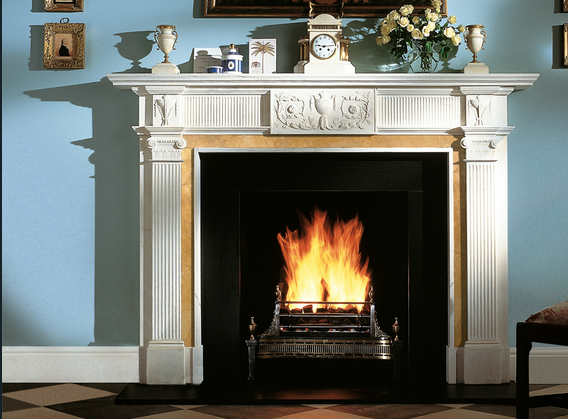
26 Sep Identifying the right Georgian fireplace for your home
This post on Georgian fireplaces, briefly talks through the styles of fireplace found in the Georgian era as well as examples of accurate reproductions that you can buy today.
If you live in a Georgian house and need help with restoring or replacing fireplaces that match up to the Georgian interiors, then contact us today on 01225 639002 or email charlie@etonsofbath.com
Georgian fireplace design and sourcing
As with much of the architecture of its time Georgian fireplace design was based on the classical orders and followed strict rules of proportion whilst employing a rich and varied range of decorative devices.
The first half of the century saw Palladian architectural influence in the ascendancy but fireplace design was revolutionised mid-century by Robert Adam, who substituted a new and elegant repertoire based on a wide variety of classical sources. Fireplaces acquired a lighter and less robust appearance displaying crisply executed low relief carving and the use of inlaid coloured marble became popular, providing a striking contrast to the remainder of the fireplace which was always worked from statuary marble.
In the early 18th Century ‘eared’ chimney surrounds were also derived from door and window surrounds. The jambs might be plain, or with elongated consoles, or treated as pilasters, or might boast freestanding columns while the horizontal member above the opening was treated as an entablature and the mantelshelf as a cornice.
Carved console jambs are typical of the 1730s ad 1740s. From the mid 18th Century onwards there was an increasing diversity in chimneypiece forms.
Alongside the conventional forms of rectangular tablet over the hearth, plain or carved with some mythological or decorative scene, newer treatments appeared. Some of the more fashionable designers like Robert Adam chose to alter proportions of their chimney openings, changing the traditional rectangular opening to something broader.
Adam is also credited for introducing decorative ornament on essentially flat surfaces. The ornament might be inlaid into or more commonly, placed on the surfaces of a chimney surround. There are some examples of such ornament in the 1760 but it becomes more widespread in the 1780’s.
As early as the 1780s the use of reeded decoration was becoming popular, both in timber and in marble chimneypieces. It conveyed the impression of fluting and reeded chimneypiece jambs were frequently used as an alternative to fluted pilasters.
Around 1800 chimneypieces began to appear with roundels at the junction of the jambs and the entablature beneath the mantelshelf. In a very short time the combination of reeding and roundels had evolved into a classic late Georgian design.
The forty years after 1800 were a period of eclecticism in architectural style. Chimneypieces in the better homes often reflected the contemporary interest in neo-Greek, new-Egyptian, Gothic and Jacobethan.
Here are some of the fireplace surrounds that we can buy today that are fantastic copies of the originals. Contact us for prices.
Based on a Queen Anne design from the beginning of the 18th century. Its simple uncluttered lines combined with generous curves make it very flexible for use anywhere. The design is derived from door and window surrounds.
A grand Georgian fireplace in the style of William Chambers. It has fluted pilasters with Ionic capitals and a frieze which incorporates a central tablet with an urn and foliage.
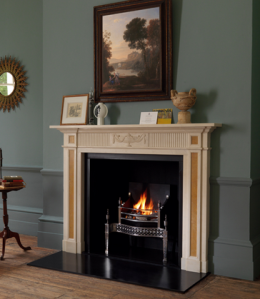
The Fitzroy
This was the chimneypiece selected by the Georgian Group to replace a pair of chimneypieces lost from its headquarters in Fitzroy Square in central London.
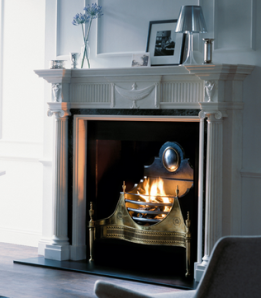
The Northumberland
An 18th century neo-classical Georgian chimneypiece which shows the influence of Robert Adam. It has fluted Ionic columns supporting an entablature decorated with classical urns and ewers with inset marble panels in contrasting colours to the Statuary marble.

The Palladian
A fine example of mid 18th Century design with robustly carved acanthus corbels with floral centre tablet with Statuary ingrounds.

The Chillngton
A handsome Georgian fireplace piece that displays the popular 18th century device of inlaying a contrasting marble within a white statuary marble field. It has a carved corniced mantel shelf above a ‘running’ frieze with a Greek Key Azul Valvende inlay and jambs that terminate in delicately carved consoles
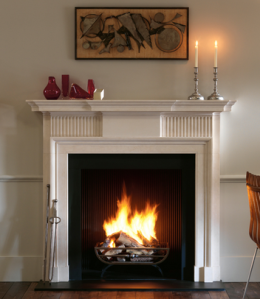
The Kedleston
A handsome chimneypiece that employs sparing detail to achieve its effect. The fluted frieze panels flank a plain centre tablet that sits beneath a breakfront corniced shelf. Carved in limestone.

The Ashbourne
A fine neo classical marble fireplace will blend nicely into Georgian interiors.

The Cavendish
Features lavish French Corbels

The Cumberland
An accurate reproduction of an Adam style chimney piece. It is very similar to the Ashbourne fireplace but without the contrasting inlay to the jambs and frieze.

The Robert Adam
Reeded pilasters sitting slightly proud of the main surround keeps this fireplace slim and elegant

The Festoons
Another Adam style fireplace but displaying prominent festoons hanging beneath urns on the jambs.
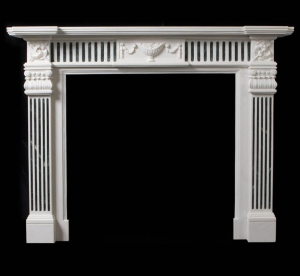
The Nelson
An accurate reproduction of an Adams style chimney piece complete with inlaid antico verde flutes to the frieze and jambs. The mantle is the typical break front of the period.

The Grosvenor
Classic Georgian elegance with black marble pillars and inlay.

The ionic White Marble
Ionic pillars stand proud and the mantelshelf displays classic dentil moulding.

The George III
Regal and elaborate this fireplace boasts floral displays, dentil moulding and classical urns.
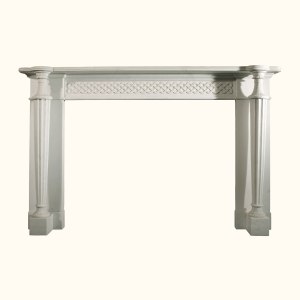
The James Wyatt
A lattice pattern entablature or frieze with elegantly shaped fluted pilasters that stand proud for this Georgian fireplace

The Late Georgian
Here you can see the convergence of the Adam style with the emerging trend for the roundel where the jamb meets the entablature.

The Regency Greek
A limestone fireplace with wide panel effect jambs and floral urns.
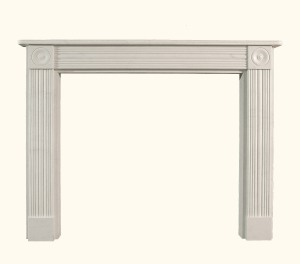
The Soane
Clean lined and elegant this classic fireplace shows the reeded pilasters with the roundells at the juncture between jambs and entablature
Most importantly, your choice of fireplace needs to take into account the grandeur of your property. Is it a townhouse, country house, manor house or rectory? The scale and proportions of your rooms and the other architectural detailing within your room. If this is simple then keep the fireplace relatively simple and vice versa. The formality of the room and its use is also important to consider. Is the room used for formal entertaining or is it a small parlour room or family room?And finally, you have to love it.
Etons of Bath specialise in Georgian interior design and are based in our studio in Bath but work nationally. Do contact us on 01225 639002 for initial advice and we’d be happy to help




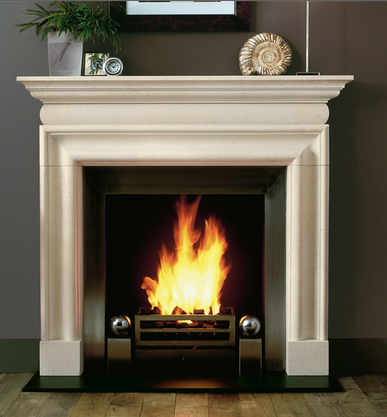
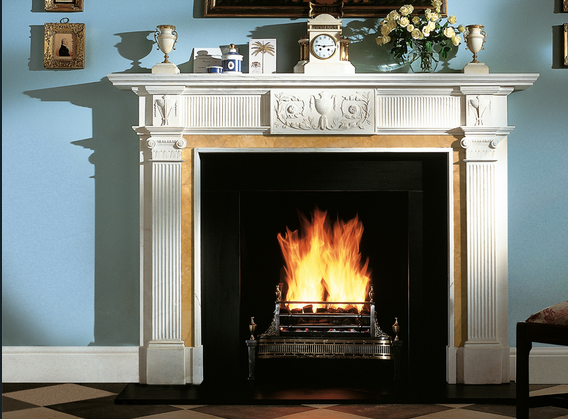
No Comments